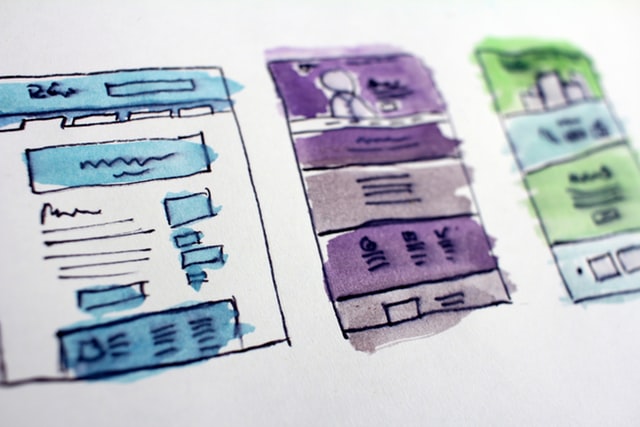7 Segmentation strategies every marketing team should implement

To get the best out of your marketing efforts, you should be segmenting your audience based on data. Generate the best possible results with these 7 segmentation strategies.
There are many ways that a marketing team can segment their audiences based on the data they have. This article will guide you through some of the less common segmentation strategies you can use to help strengthen your marketing efforts and see a higher conversion in sales.
What is marketing segmentation?
Segmentation is essentially a way of splitting up your target market into categorized groups. By grouping your audience into various types you’re able to:
- Create stronger and more targeted messaging
- Give a more personalized brand experience
- Collect more specific and actionable leads
- Stand out from your competition by giving the right USPs
- Drive new product innovation
- Hit marketing campaign goals
Segmentation itself usually falls into four categories: Demographic, Psychographic, Behavioral and Geographic. Each of these segments has its own purpose. They can help any business to increase brand integrity and achieve a higher conversion to sales- if marketing follows up with the correct messaging.
As long as your segments are up to date, informed with proper data, and are large enough to target with certain advertising efforts then they can do wonders for sales.
Let’s look at segmentation strategies that are often overlooked but can generate great results:
7 segmentation strategies you can use to generate results
Buyer journey segmentation
This is a great way for you to upsell, cross-sell or act upon an abandoned cart. By segmenting your audience into where they are in the buyer journey you’re able to give them exactly what they need and make sure they convert.
If someone is in the early stages of a buyer journey they’re more likely to need product explainer videos or similar content. Whereas, if they’re further down the funnel you’ll want to focus your efforts on reviews, scarcity tactics, and product line examples so consumers can compare costs.
Engagement segmentation
It can be hard to know what message to send people if you’re unsure of how much they’ve engaged with your brand in the past.
Look to rank engagement metrics:
- Social followings
- Newsletter subscriptions
- Click-through rates
- Product purchases
- Chatbot tool interactions
Assign a value to each of these metrics and it will help you to better define the level someone is willing to engage with your brand.
This is where the benefits of chatbots really come in to play, you’re not only enhancing the user’s experience but you’re collecting data on how much of that experience they’re willing to dive into.
Understanding this can help you to hold back on overwhelming a customer and can also encourage you to engage with them more when they’ve shown they want to hear from you.

Seasonal segmentation
This one is a combination of geographical segmentation and stage of life segmentation. Seasonal doesn’t just mean what the weather is doing. Although, this often does play a signifying factor in our purchasing decisions. Studies have shown a drop of just one degree in the minimum average temperature can cost the UK economy £2.5 billion.
Look to split your list depending on what will be going on around your customer and their age group at a particular time of year. This could mean graduating college right through to looking for retirement plans.
Give messaging that’s critical to life decisions at the right time in their life.
Device segmentation
Device segmentation enables you to optimize your messaging for the screen it’s being delivered on. You can start to get smart with your advertising efforts and speak to a consumer’s surroundings.
Know that someone is on their mobile when viewing your social media advertisement? Answer to that. It’s smart advertising and your brand will be better received because of it.
Segmented segmentations
The “Inception” of segmentations and where this can get complicated but really excel. Find ways that you can combine and define your lists. Use geographical segmentations alongside behavioral to target certain buyers within a certain area of the world with a product they need, for example.
There are countless ways to combine the power of segmentation to increase your sales. The more you make data-informed decisions and marketing efforts the more likely you are to sell.
Be careful you don’t get too specific. If you’re too specific you will limit some of your advertising opportunities and you’ll struggle to collect enough data to see if your campaign was successful.
Churn risk segmentations
If you want to focus on your customer retention then building lists based on churn risk can be the way to go.
How can you do this? Look at customers lost and the data you have. What traits are commonly seen by them all? Do you see a customer churn rate increase over a certain period of time? After they’ve bought a certain product or spent a certain amount? Perhaps they’ve come to the end of your sales journey and do not return to buy again.
Whatever the common factors are, identifying them and addressing them can lower your churn rate and increase returning customers.
This strategy can also inform new product decisions. If you’re seeing a customer drop-off after receiving, or using a product for a certain time, what does this mean about the product? Fill your PRD template with research and evolve your product with data-driven decisions.

Average spend segmentation
This is a great way of breaking up your audience and identifying how much they’re willing to spend on your product. This list can not only increase returning sales but it can also help you to make strategic marketing decisions moving forward.
By identifying how much a customer is willing to spend on your brand you’re able to cross-sell similar products with targeted marketing within their budget.
This can also help you to make decisions on content marketing tactics. What has a certain person seen that led them to spend a certain amount with your business?
These answers will help you audit your own content. It will also help you create better-converting content by enhancing it with techniques you know already work.
Lastly, this strategy will help you to scrap the content that is not working as you should be segmenting those people that have yet to spend anything but have still received communications from your business.
Wrapping up
Hopefully, you’re able to walk away from this article with some segmentation ideas you can use within your own marketing efforts. There are so many ways you can segment lists outside of the traditional four we discussed at the beginning of the article.
Remember to keep your segments large enough to acquire enough data to adapt your future segmentation strategy.
Segmentation plays a key role in campaign planning – and so does a bunch of other data. To find out how data fits into the grand scheme of a campaign plan, check out our free guide:
Tell us what you think of this article by leaving a comment on LinkedIn.
Or share it on:

